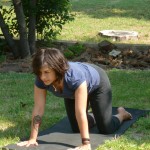Harvard study shows integrated care may offer better low-back pain relief
One of the most common ailments of humans since we began walking upright is low back pain. Modern medicine has employed a wide range of strategies to provide relief to people with chronic low-back pain ranging from anti-pain, and anti-inflammatory medicines to surgery. For some people those remedies provide significant relief, but many people continue to experience sometimes debilitating pain.
In an effort to find ways to increase the improvement in pain, researchers led by Dr. David Eisenberg at Harvard Medical School in Boston collaborated with researchers at Seattle’s Group Health Research Institute, and Brown University, Providence RI, on an integrated care study. They compared conventional medicine, or usual care, to a combination of usual care and complementary or alternative medicine approaches, referred to as integrated care. The results were published April 19 in the Journal of Alternative and Complementary Medicine.
A total of 20 people from an occupational health clinic or a community health clinic who had low-back pain lasting three to 12 weeks were randomly assigned to undergo usual care or integrated care for a period of 12 weeks. The integrated care included acupuncture, chiropractic, massage therapy, occupational therapy, Yoga, mind-body techniques, and nutritional counseling.
 To measure the effectiveness of the treatments, the researchers used two standardized questionnaires to assess pain and symptoms of pain. One is called a Roland Morris score used to measure low-back pain, and the other is the SF-12 Health Survey Score. In addition, patients were asked to perform certain common physical tasks, which are measured for difficulty and time to perform them.
To measure the effectiveness of the treatments, the researchers used two standardized questionnaires to assess pain and symptoms of pain. One is called a Roland Morris score used to measure low-back pain, and the other is the SF-12 Health Survey Score. In addition, patients were asked to perform certain common physical tasks, which are measured for difficulty and time to perform them.
During the 12-week study, participants visited the clinics for treatments a median of 12 times, some participants went to the clinic as few as 5 times and some as many as 25 times. When they compared the results on the questionnaires and the performance tasks they found that participants in the integrated care group showed significantly greater improvements in symptom bothersomeness, pain and functional status. Furthermore the differences in the scores between the two groups continued after 26 weeks, although the difference was less.

While the study was too small to draw firm conclusions, the researchers did say that the results showed both that it is feasible to combine conventional and complementary care for people with low-back pain, and that the trend shown in improved relief is promising, and that further, larger studies should be conducted.

